Table of Contents
One of the most important traits we can teach our kids is empathy. It is the cornerstone of kindness, compassion, and understanding in relationships. However, how can we impart something as elusive as empathy? At Lit’l Bobby, we think that telling stories can be a really effective way to help develop this important quality. Here are some tips on how to assist your kids in growing empathy.
Lead by Example
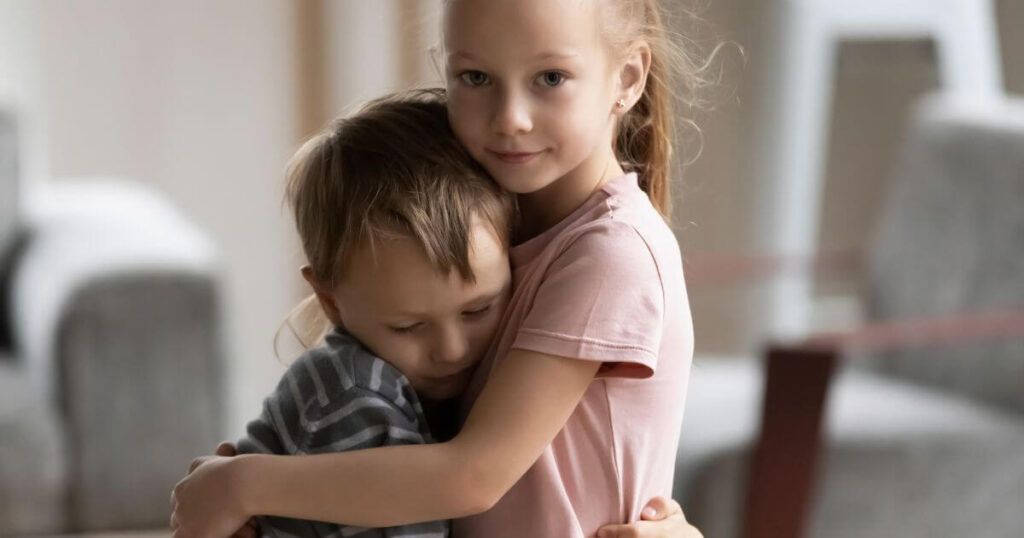
Children are acutely aware of their surroundings and frequently emulate the attitudes and actions of their parents and other primary caregivers. Thus, setting a good example for others is one of the most effective ways to teach empathy. The following are some doable actions and concepts to help you live a more sympathetic life:
Show Empathy in Everyday Interactions
There are a ton of possibilities in your daily interactions to show empathy. When you come across someone who is upset or having trouble, be understanding and compassionate. Actively listen to them, respect their emotions, and extend your support. For instance, show your worry and offer assistance to a buddy who is going through a difficult moment. Tell your kids why you’re doing this and how it could potentially improve the other person’s mood.
Discuss Emotions Openly
Make discussing emotions in your home a regular occurrence. Tell your kids when you feel something intense, like joy, grief, irritation, or enthusiasm, and tell them why you feel that way. For example, you could say, “I’m feeling really happy today because I had a great conversation with my friend,” or even “I’m feeling a bit sad because I saw something upsetting on the news.” This helps kids identify and express their own feelings, which is a crucial first step in becoming empathetic.
Respond to Your Child’s Emotions with Empathy
Spend some time listening to your child when they are angry and confirming their emotions. Recognize their feelings rather than brushing them off or jumping to conclusions. Saying something like, “I see that you’re upset because your toy broke,” could be an example. That must be very annoying. This not only makes them feel understood, but it also serves as an example of how to react to people with empathy.
Reflect on Empathetic Moments Together
After you’ve shown empathy in a certain circumstance, discuss it briefly with your youngster. Talk about what happened, your reaction, and the other person’s possible feelings. What would your child do in a similar situation? Children are encouraged to consider the impact of their actions on others and are helped to reinforce the concept of empathy via this introspection.
Share Stories of Empathy
Tell stories about acts of generosity and empathy that come from your own experience or the news. Talk to your kids about these tales and investigate the effects of the compassionate deeds on the individuals concerned. You may, for instance, tell a tale of someone who, in a time of need, assisted a neighbor and talk about the impact of that deed of kindness.
Practice Patience and Understanding in Difficult Situations
Children frequently observe how you resolve conflict and dissatisfaction. Make an effort to handle these circumstances with tolerance and empathy. Rather than getting upset when someone cuts you off in traffic, you could respond by saying, “Perhaps they’re rushing because they have an emergency.” This demonstrates to your youngster the value of taking other people’s viewpoints into account, even during trying times.
Volunteer as a Family
Participate as a family in volunteer or community service projects. Giving to those in need is a potent approach to foster empathy in children. Through activities such as volunteering at a nearby shelter, taking part in neighborhood cleanups, or giving clothing and toys, kids can directly witness the good effects of acts of compassion.
Empathy in Everyday Routines
Make empathy a part of your everyday activities. Simple actions like complementing someone, checking up on elderly neighbors, or writing thank-you cards can all be turned into teaching opportunities. Talk to your child about the importance of these activities and encourage them to participate.
You may establish a supportive atmosphere for empathy in your children by modeling empathy on a regular basis and having meaningful conversations with them about it. Recall that the objective is to intentionally and mindfully teach empathy through your behaviors rather than to be flawless. Your kids will discover that empathy is a way of life rather than merely a sentiment, which will improve their relationships and make the world a better place.
Use Stories to Teach Empathy
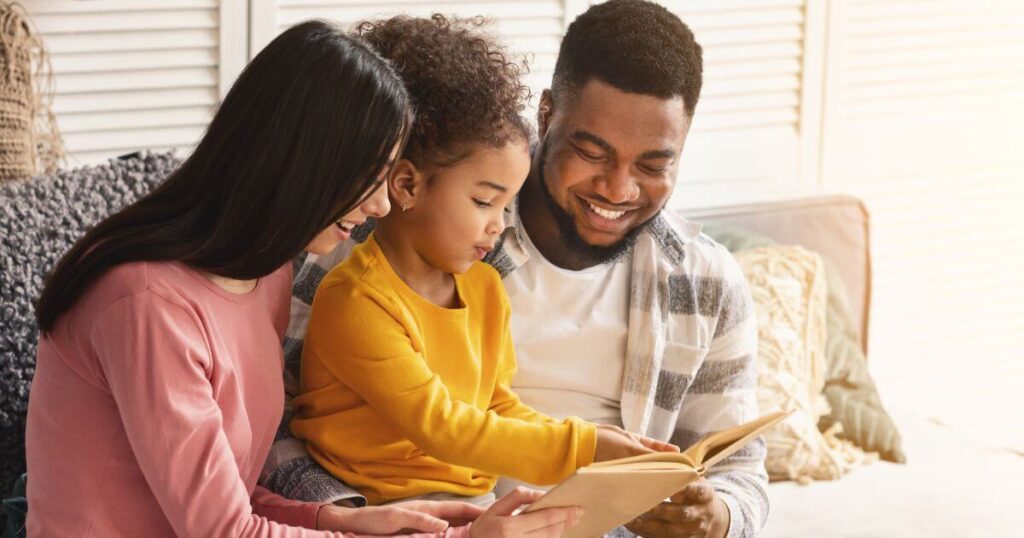
Books have the special ability to take readers to new places and provide them a variety of viewpoints on life. Because of this, stories are a fantastic tool for teaching kids empathy. Our books at Lit’l Bobby are written with education, inspiration, and amusement in mind. Here are some ideas from our adored series on how to use stories to help your kids develop empathy.
Choose Stories with Empathetic Characters
When choosing books, seek toward tales featuring kind and empathetic individuals. You can use these figures as role models for your kids. In our book “Makua the Whale,” for example, Makua the Whale and Lit’l Boby demonstrate incredible empathy by assisting Chloe Clam in finding her misplaced pearl. Through Makua’s activities, children learn the value of recognizing and providing for the needs of others. After reading, have a conversation with your kid about how Chloe Calm felt protected and appreciated because of Makua and Little Bobbie’s sensitivity.
Discuss the Characters’ Emotions
Talk to your child about the reasons and feelings of the characters. Pose queries along the lines of, “How do you think the character felt when that happened?” Alternatively “Why do you think they acted that way?” Your child will be inspired to consider the thoughts and feelings of others as a result. In the book “Happiness,” for instance, the protagonists investigate their sources of happiness. You can inquire of your child, “What do you believe brings happiness to the character? What impact does their happiness have on those around them?
Relate the Story to Real-Life Situations
Encourage your child to relate the tale to personal experiences. As a result, the lessons become more applicable and concrete. Saying, “Recall when you helped your friend at school?” is one example of what you might say after reading about Makua assisting Chloe the Clam. That was similar to Makua lending a hand to Chloe the Clam.” The significance of empathy in daily life is reaffirmed when people relate the narrative to their own experiences.
Invite Children to Share Their Stories
Invite your kids to tell you about their own acts of compassion and empathy. Sharing these moments, whether it was when they felt taken care of or when they assisted a friend, can help kids realize the consequences of their actions. This gives you the chance to commend and support their compassionate actions.
Stories are a fun and effective way to teach empathy. Our goal at Lit’l Bobby is to write stories that enthrall young readers while imparting important life lessons. It is possible to assist your children in developing a strong sense of empathy by incorporating these stories into your everyday routine and having meaningful conversations and activities. This ability will benefit children much throughout their life by encouraging empathy, compassion, and solid interpersonal bonds. One book at a time, let’s transform storytime into a magical occasion of education and bonding.
Encourage Open Discussions

Fostering empathy in children requires establishing a space where they feel free to share their ideas and feelings. Children benefit from open dialogue because it helps them express their emotions, comprehend the viewpoints of others, and grow emotionally intelligent. Here’s how to foster an environment of candid conversation in your household:
Create a Safe and Supportive Environment
Make sure your house is a secure and encouraging space for your kids to express their emotions. Motivate them to communicate honestly without worrying about criticism or consequences. Assure them that it’s acceptable to express their feelings and that they have a right to them. For instance, if your child is upset with you over a quarrel at school, pay close attention to what they are saying and let them know you will support them through it.
Practice Active Listening
In order to listen actively, one must give their whole attention to what the other person is saying and refrain from interrupting or making up a response while they are still speaking. Demonstrate to your child that you are truly curious about their opinions. Affirm verbally by making eye contact, nodding in agreement, and saying something like, “I understand,” or “That sounds difficult.” Your child will feel acknowledged and appreciated as a result, which will encourage them to communicate more freely.
Ask Open-Ended Questions
Children are encouraged to think more deeply and to express themselves fully when they are asked open-ended questions. Ask questions that call for more detailed responses as opposed to ones that can be answered with a yes or no. For instance, you may inquire, “What was the best part of your day?” or “Can you tell me about something interesting that happened today?” in instead of, “Did you have a good day at school?” Children can delve deeper into the exploration of their thoughts and feelings by using these questions.
Share Your Own Feelings
Emotional expression can be normalized by setting an example of transparency by sharing your own feelings and experiences. When it’s appropriate, express your emotions and give a reason for them. This teaches your youngster that feeling and expressing emotions are OK. For example, you could say, “I felt really proud today when I finished my project at work,” or even “I was a bit stressed earlier because I had a lot to do, but talking about it helps me feel better.”
Encourage Open Discussions
Creating an environment where children feel comfortable expressing their thoughts and emotions is crucial for fostering empathy. Open discussions help children articulate their feelings, understand others’ perspectives, and develop emotional intelligence. Here’s how you can cultivate a culture of open communication in your home:
Create a Safe and Supportive Environment
Ensure that your home is a place where your children feel safe and supported when sharing their thoughts and feelings. Encourage them to speak openly without fear of judgment or punishment. Let them know that their emotions are valid and that it’s okay to express them. For example, if your child is upset about a disagreement at school, listen attentively and reassure them that it’s okay to feel that way and that you’re there to help them through it.
Practice Active Listening
Active listening involves fully concentrating on what the speaker is saying without interrupting or formulating a response while they are still talking. Show your child that you are genuinely interested in what they have to say. Make eye contact, nod in agreement, and provide verbal affirmations like, “I understand,” or “That sounds difficult.” This makes your child feel heard and valued, encouraging them to share more openly.
Ask Open-Ended Questions
Open-ended questions encourage children to think more deeply and express themselves more fully. Instead of asking yes-or-no questions, try questions that require more elaborate answers. For example, instead of asking, “Did you have a good day at school?” you could ask, “What was the best part of your day?” or “Can you tell me about something interesting that happened today?” These questions help children explore their feelings and thoughts in greater depth.
Share Your Own Feelings
Modeling openness by sharing your own emotions and experiences can help normalize emotional expression. When appropriate, share your feelings and explain why you feel that way. This shows your child that it’s okay to have and express emotions. For instance, you might say, “I felt really proud today when I finished my project at work,” or “I was a bit stressed earlier because I had a lot to do, but talking about it helps me feel better.”

Validate Their Emotions
When your child shares their feelings, validate their emotions by acknowledging and empathizing with them. Avoid dismissing their feelings or telling them how they should feel. Instead, let them know that their emotions are understood and accepted. For example, if your child says they are sad because a friend moved away, you might say, “I can see why you’re feeling sad. It’s hard when someone you care about moves away.”
Encourage Empathy Through Stories and Role-Playing
Stories and role-playing can be excellent tools for fostering empathy. Discuss characters’ feelings and motivations in the books you read together, or role-play different scenarios to help your child understand various perspectives. For example, after reading a story where a character feels left out, ask your child, “How do you think that character felt when they were left out? What could the other characters have done to make them feel included?”
Discuss Real-Life Situations
Use real-life situations to spark discussions about empathy. This could be something that happened at school, an event in the news, or an experience within your family. Discuss how people involved might be feeling and what could be done to help or support them. For example, if your child talks about a classmate who was teased, discuss how that classmate might feel and brainstorm ways to show kindness and support.
Practice Reflective Listening
Reflective listening entails giving your child your whole attention by repeating what they have said to make sure they comprehend. Children feel heard and are inspired to express themselves more while using this strategy. You may reply, “It sounds like you’re feeling angry because your friend didn’t play with you,” if your youngster says, “I’m angry because my friend didn’t play with me today.” That had to have been rather annoying.
Hold Family Meetings
Frequent family gatherings offer a structured forum for all members to express their ideas, emotions, and life experiences. By doing this, you can guarantee that everyone is heard and that open communication is fostered. Encourage every family member to share good experiences, talk about any problems, and give an update on their week during these gatherings. Children can benefit from this by learning how to listen to others and communicate their own emotions in a safe setting.
One of the main components of teaching empathy is to promote candid conversations. You may assist your child gain a profound awareness of both themselves and other people by establishing a secure and encouraging atmosphere, engaging in active listening, asking open-ended questions, sharing your own thoughts, validating their emotions, and utilizing stories and real-life events. By strengthening the emotional ties among your family and promoting empathy, these activities create a caring environment where everyone feels respected and understood.
Model Problem-Solving and Conflict Resolution
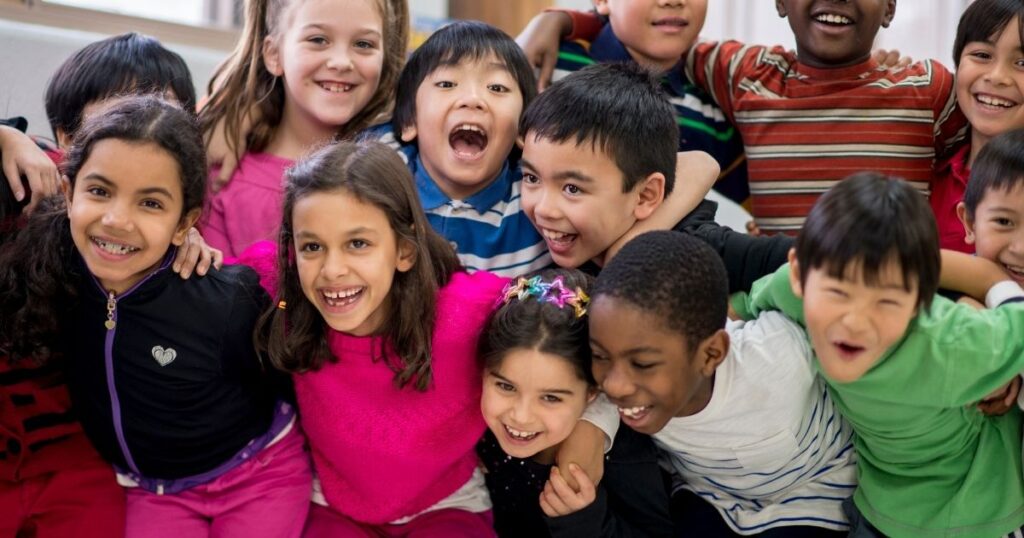
It is imperative for children’s social and emotional development that they learn how to resolve conflicts with empathy. Your children can learn how to handle conflicts in a kind and productive way if you demonstrate good problem-solving and conflict resolution techniques. The following tactics can help you:
- Stay Calm and Neutral
Maintaining composure and objectivity during disputes is crucial. Keep your cool to defuse tense situations; children pick up on signs from your reactions. Show that disagreements can be settled amicably, without becoming irate or frustrated. For instance, if siblings are fighting over a toy, handle the situation coolly and use calming language to help them feel less emotionally invested. - Acknowledge Feelings
Commence with expressing your understanding of everyone’s emotions. Allow every child to freely communicate their thoughts and feelings without any interruptions. They feel heard and understood because to this confirmation, which is a crucial first step in resolving a problem. Say, “I see that you’re upset because you both want to play with the same toy,” as an example. Let’s discuss how we can work together to resolve this. - Use “I” Statements
Teach your kids to communicate their wants and feelings without placing blame or making accusations against others by utilizing “I” statements. This method encourages a more fruitful conversation. Set an example for this conduct by utilizing “I” sentences. Saying something like, “I feel frustrated when I’m not listened to because it makes me feel unimportant,” would be a better example than, “You never listen to me.” - Identify the Problem Together
Encourage your kids to work together to identify the issue. Make sure that everyone is in agreement about the problem’s definition and ask them to clarify it. Children are better able to comprehend that resolving conflicts is a shared responsibility thanks to this cooperative approach. Say, for instance, “It appears that the issue is that you both want to use the same toy simultaneously. Is that accurate? - Brainstorm Solutions
Help your kids come up with ideas for potential fixes. Urge them to generate several concepts and talk about the advantages and disadvantages of each. Through this process, they learn that it’s crucial to take into account many viewpoints and that there are frequently multiple approaches to resolving a problem. Saying “What are some ways we can solve this problem so that everyone feels happy?” is one example of what you could say. - Evaluate and Choose a Solution
After a few suggestions have been put out, assist your kids in weighing their options and selecting a solution that meets the needs of all parties. Talk about the viability and fairness of each option. This step teaches kids to collaborate while making decisions and to take other people’s feelings into account. Say, for instance, “Let’s consider which solution is the most equitable and will satisfy everyone.” Which one do you believe will function the best? - Implement the Solution
Once a solution has been chosen, help your kids put it into action. Make certain that everyone is aware of their responsibilities and what is expected of them. This emphasizes the value of teamwork and teaches kids to carry out ideas that have been agreed upon. For instance, you could set a timer to make sure every child has equal playtime if they chose to share the toy. - Reflect on the Outcome
Take some time to discuss the resolution with your kids once the dispute has been settled. Talk about the positives, negatives, and lessons they took away from the experience. By doing this, they strengthen the lessons they’ve learnt and get ready to deal with disagreements in the future. “How did that solution work for you?” one may ask. What could we do differently the next time around?” - Practice Empathy
Urge your kids to consider one another’s perspectives. Invite them to think about the other person’s feelings and the possible causes of those feelings. By practicing empathy, they can better comprehend other people’s viewpoints and lessen the possibility of future disputes. Saying something like, “How does your sister feel about not being able to play with the toy? In their position, how would you feel?” - Use Role-Playing
Playing out various conflict scenarios through role-playing can be an entertaining and instructive technique to practice addressing problems and resolving conflicts. Make up a variety of scenarios and walk your kids through the process of solving them. Their self-assurance and conflict-resolution abilities can grow as a result of this practical experience. You may, for instance, create a scenario in which a child unintentionally smashes a toy belonging to another child and discuss possible ways for them to repent and make apologies.
By practicing problem-solving and conflict resolution, you provide your kids the skills they need to handle conflict in an amicable and productive way. Your children can learn how to resolve conflicts with empathy and understanding if you remain composed, acknowledge feelings, use “I” statements, identify problems together, brainstorm solutions, assess options, carry out plans, reflect on results, and engage in role-playing. These abilities support their general emotional intelligence and resilience in addition to improving their relationships.
Promote Acts of Kindness
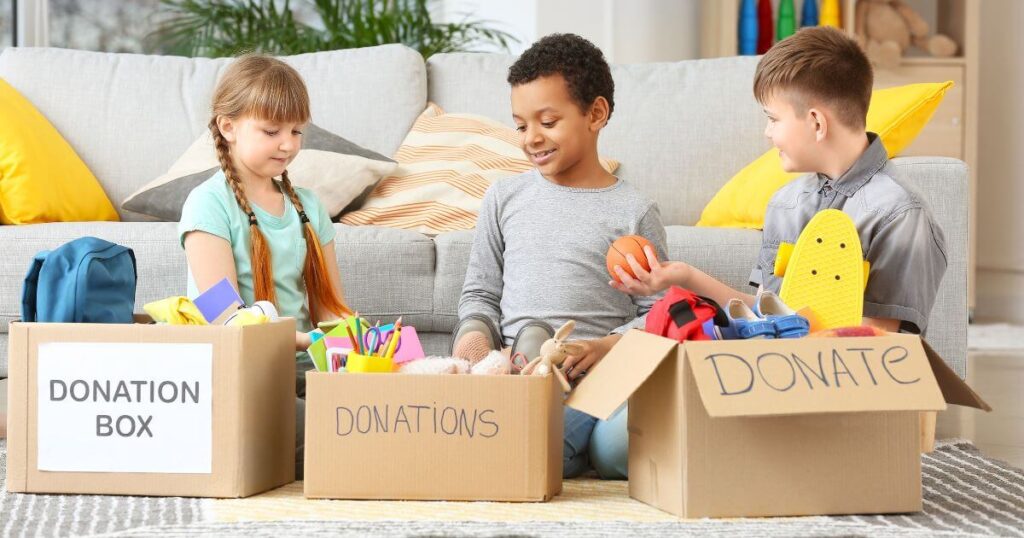
Fostering empathy in youngsters can be effectively achieved through encouraging acts of kindness. You may teach kids about the good deeds they can do for others by modeling and encouraging kindness. Here are some ideas for fostering an atmosphere that values kindness:
- Lead by Example
Children pick up a lot of knowledge from watching their parents and other adult caregivers behave. Be nice to others in all of your contacts, whether it’s by lending a neighbor a helping hand, being courteous to service providers, or expressing your gratitude to loved ones. Your children are more inclined to imitate your kind actions when they witness you doing so. Your child will learn to respect and value other people’s labor, for instance, if you make it a habit to thank the grocery store cashier. - Incorporate Kindness into Daily Routines
Include acts of kindness in your family’s everyday routine. Kids should be encouraged to do tiny deeds of kindness on a regular basis, including sharing toys, helping out with chores, or sending thank-you cards. These small changes can have a significant impact on how kids view and engage with the world. To cultivate a practice of conscious compassion, you could dedicate a short period of time each day to talking about the acts of kindness they have done or have been the recipient of. - Encourage Volunteering and Community Service
Get your kids involved in community service and volunteer work. Engaging in these events enables kids to comprehend the wider reach of compassion and the significance of contributing to the community. Engaging in community service projects like as volunteering at a food bank, cleaning up a neighborhood, or paying a visit to a nursing home can have a significant influence. Talk to your kids about the importance of giving back to their community and how their actions benefit others.
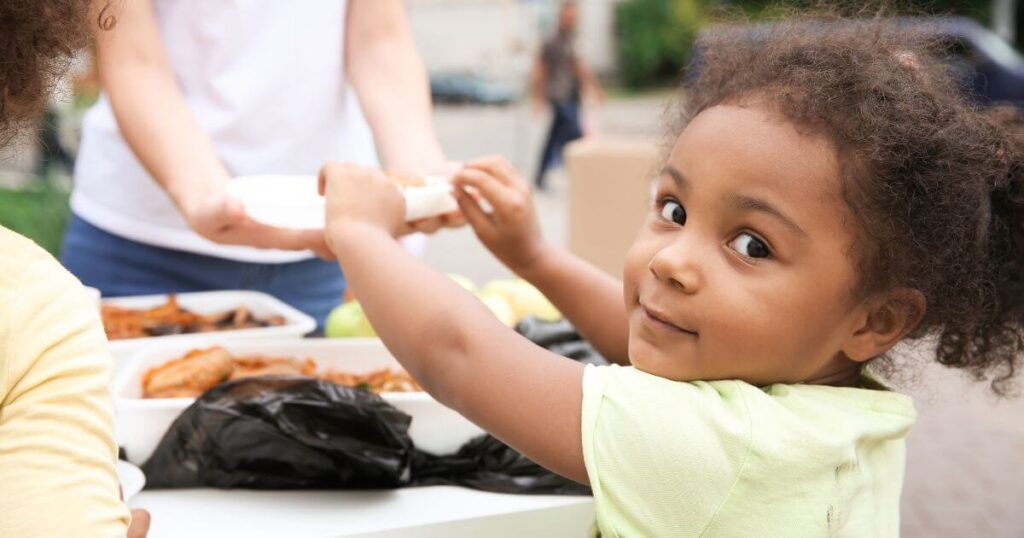
Encouraging your kids to be kind to others is a crucial first step in developing empathy. You can help your children understand and value the importance of kindness by setting an example, incorporating kindness into everyday routines, highlighting kindness through stories, celebrating kindness, encouraging volunteering, teaching empathy through perspective-taking, creating opportunities for kindness, and talking about the ripple effect. These exercises not only improve their capacity for empathy but also help kids develop a kind and loving mindset that will serve them well in life.

